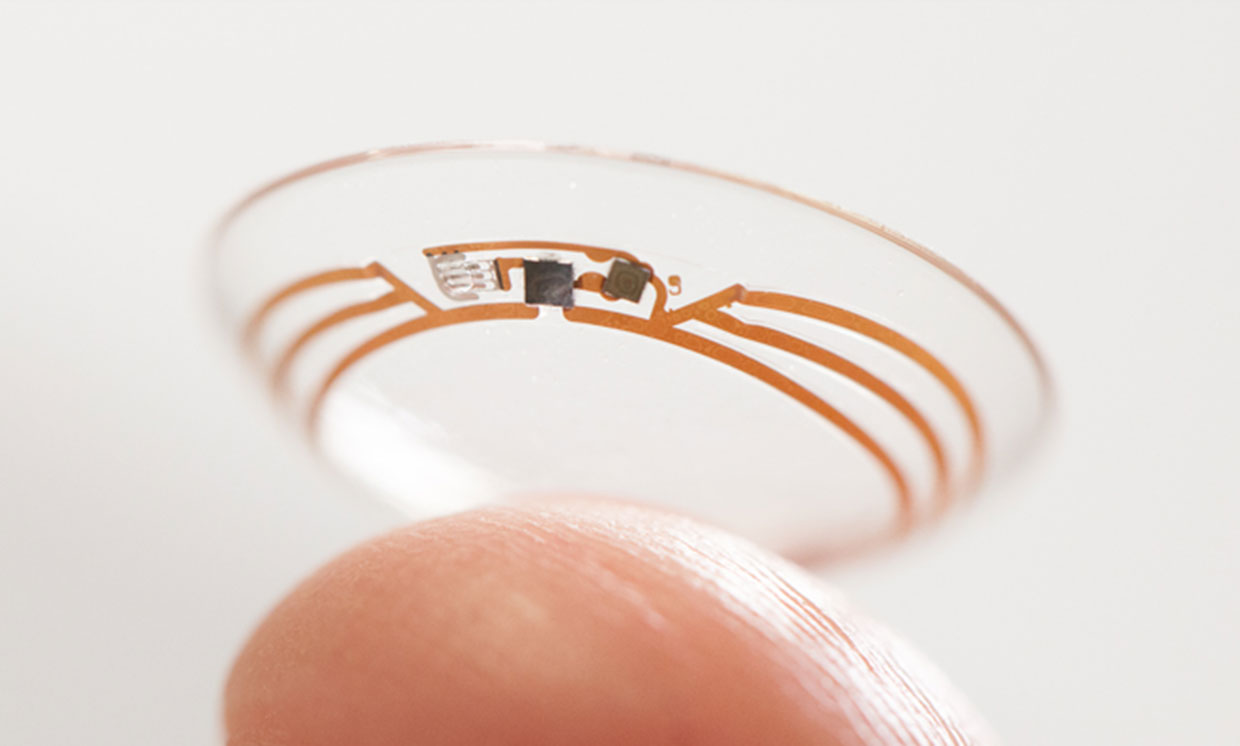Why the Alphabet glucose meter didn’t take off
- Transfer
Silicon Valley harnessed to a complex biological project, and did not remove

They had the resources of two large companies, the best experts in biology and electrical engineering. And yet, researchers from Alphabet and Novartis could not create an accurate glucose sensor in contact lenses.
Technical Director Brian Otis, who works at Verily , a research division of Alphabet Holding, announced in a company blog that the companies decided to freeze the project to create a glucose sensor that is inserted into the eye. They failed to achieve accurate and consistent results of the device in clinical trials.
This announcement certainly upset the crowds of people suffering from type 1 diabetes, and waiting for the appearance of an easy and non-invasive way of tracking blood sugar levels (glucose). So far, these people will have to prick their fingers several times a day to measure their blood glucose levels.
However, this announcement did not come as a surprise to many scientists, who for several decades had unsuccessfully tried to create such sensors [although there are some positive reviews about the work of Russian scientists ”. trans.]. Researchers tried to track glucose not only in tears, but also in other fluids secreted by the body, such as sweat, saliva and urine. And all these projects failed one by one.
Some of the scientists came to the conclusion that it is impossible in principle to create such a sensor. “The truly non-invasive biological measurements are our holy grail, which is very, very hard to find,” says Jason Heikenfeld, director of the Laboratory of Innovative Devices at the University of Cincinnati, co-founder of the sweat sensor startup company Eccrine Systems. “For example, in our work since then, it took us seven years of academic research,” simply to demonstrate that perspiration can accurately and continuously measure another analyte — alcohol, he said.
Heikenfeld says that Eccrine Systems is not going to be involved in measuring glucose in the near future, due to the difficulties associated with obtaining accurate periodic measurements.
Even more difficult is tracking glucose in tears, he says, due to the small size of the eye and its complex environment. Tears evaporate, flow in different directions along the eye, may linger behind the lens, their volume increases during crying or cutting onions, and it is not possible to stimulate the production of tears for glucose measurement, unlike sweat. The intraocular sensor must overcome all these obstacles, remaining small and flexible enough to be on the eyeball, without interfering with vision.
Despite these difficulties, when the founders of the project of smart contact lenses released from the Google the X , announcedabout the beginning of their work in 2014, they hoped to “crack the puzzle of tear-glucose”. They cooperated with Alcon, the eye care division of Novartis, to implement this project.
Four years have passed, and, apparently, like many other companies before them, they had to throw a white flag - at least for now. They found that "interference from biomolecules in tears leads to difficulties in accurately measuring a small amount of glucose in a tear film." In addition, "clinical studies have demonstrated the difficulties in achieving a stable state of the environment, necessary for reliable measurement of glucose levels," as Otis wrote in his post. In other words, they could not get uniform and accurate results of glucose measurement.
In addition to measuring glucose, companies worked on tasks such as creating self-accommodating contact lenses to correct presbyopia (losing the ability to focus on closely located objects) and smart intraocular lenses that improve vision after cataract removal. Otis said the companies will continue to work on these two programs.
The announcement from Alphabet was made the day after an article appeared in IEEE Spectrum magazine in which an expert assumed that the project for measuring glucose from this company was not successful. The article described another eye glucose sensor, developed by Noviosense , and demonstrated positive clinical results at an early stage.
